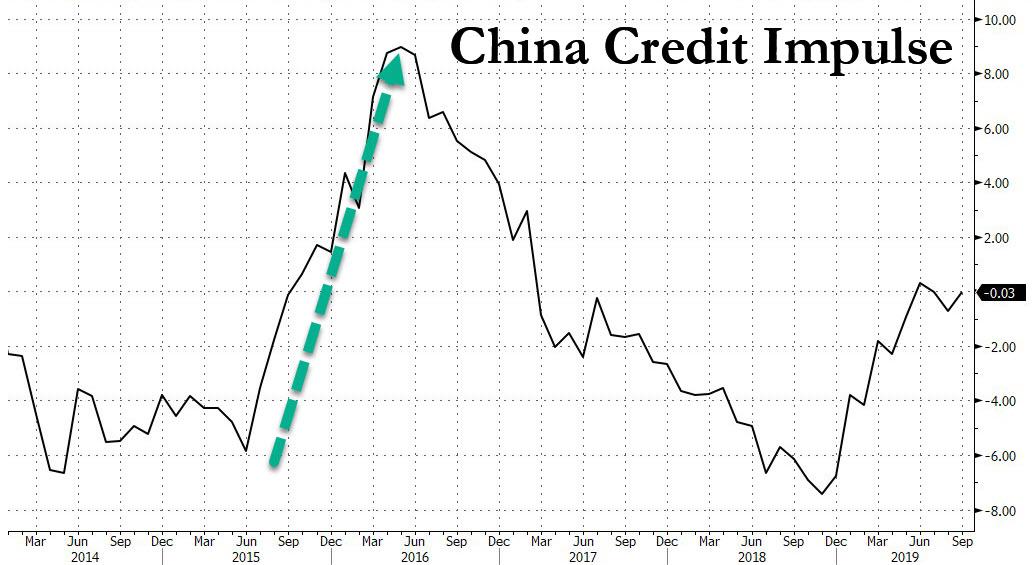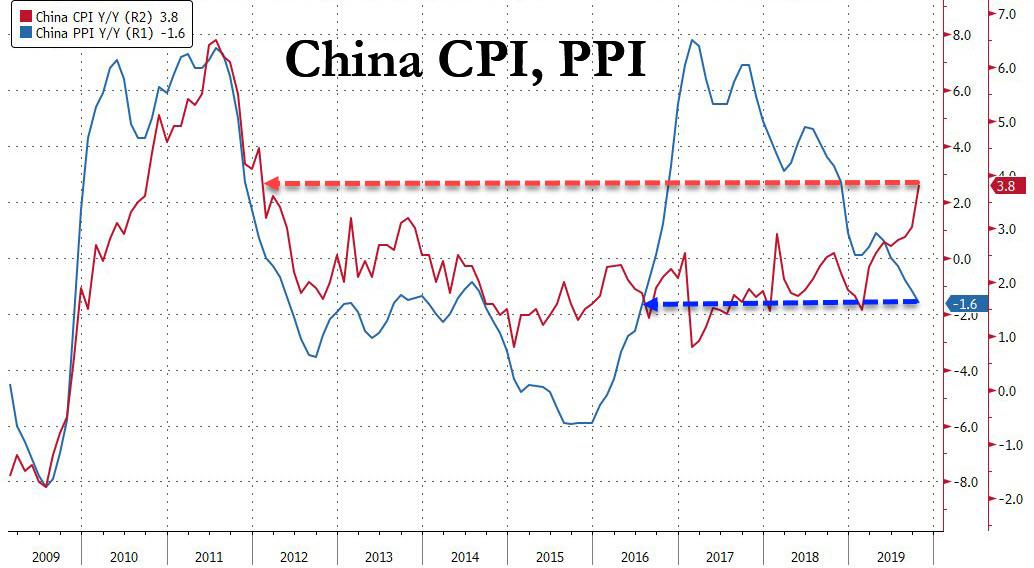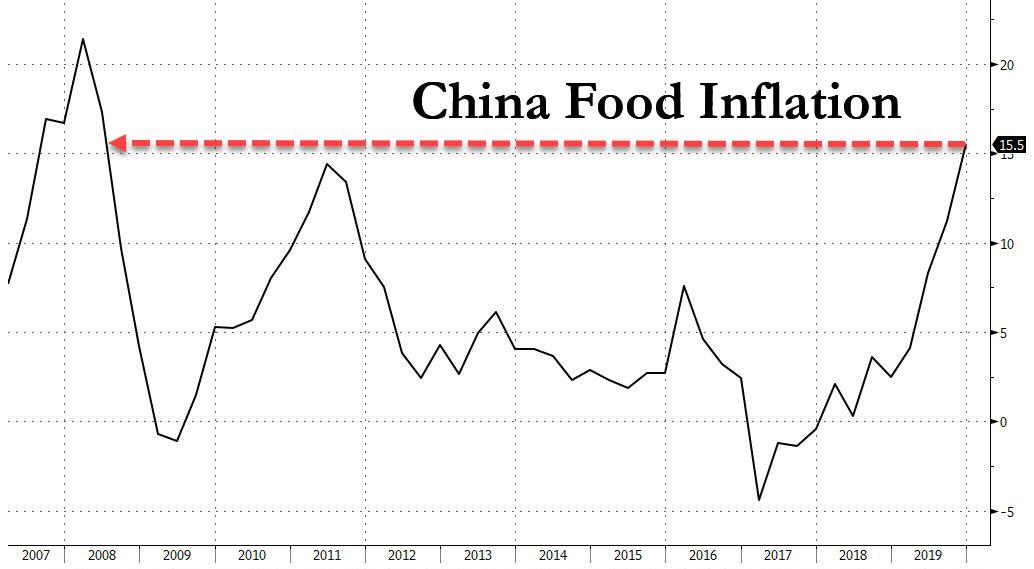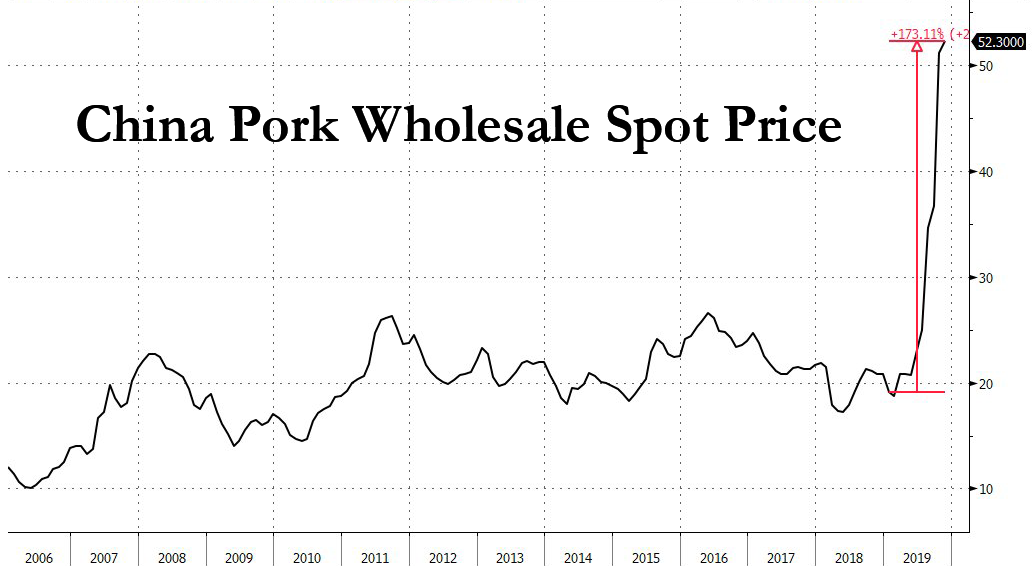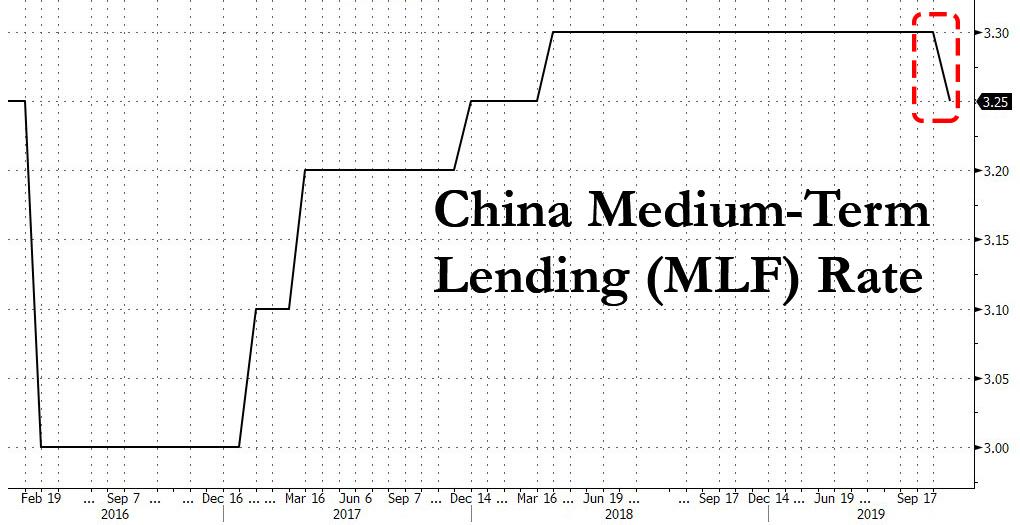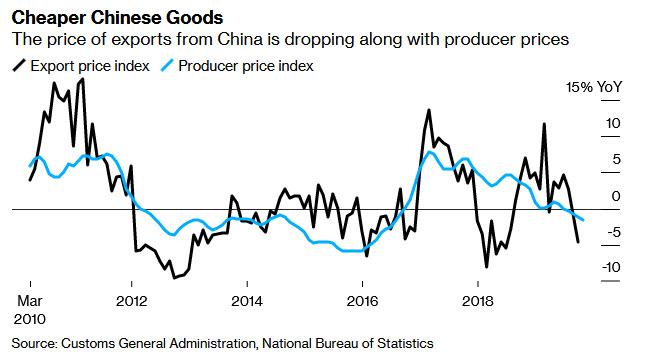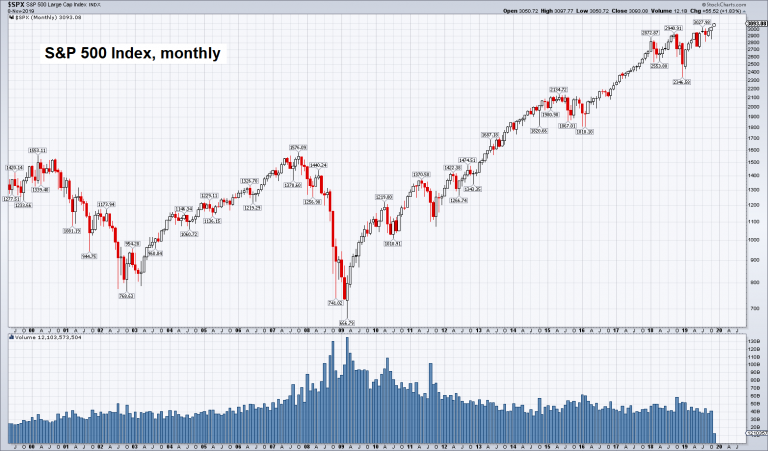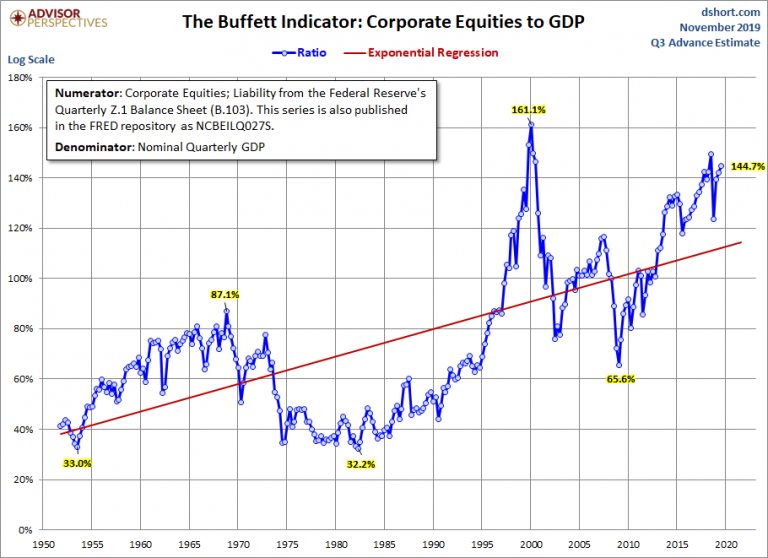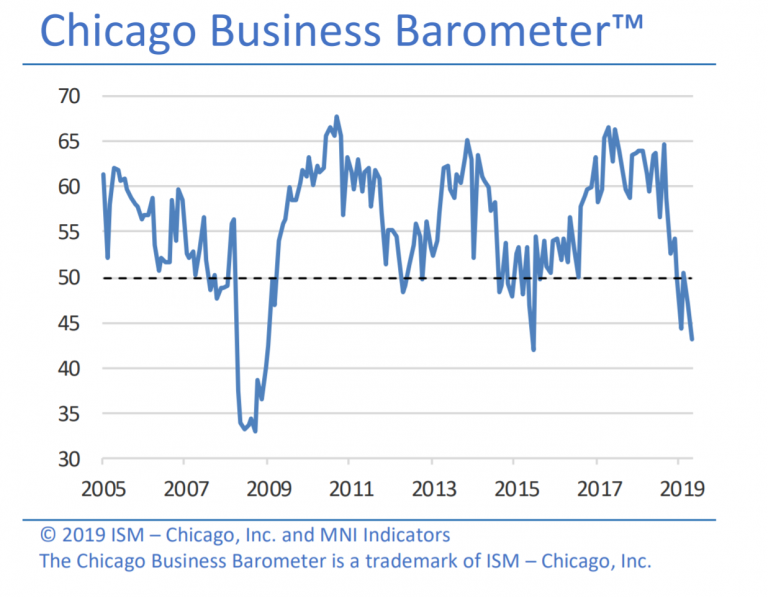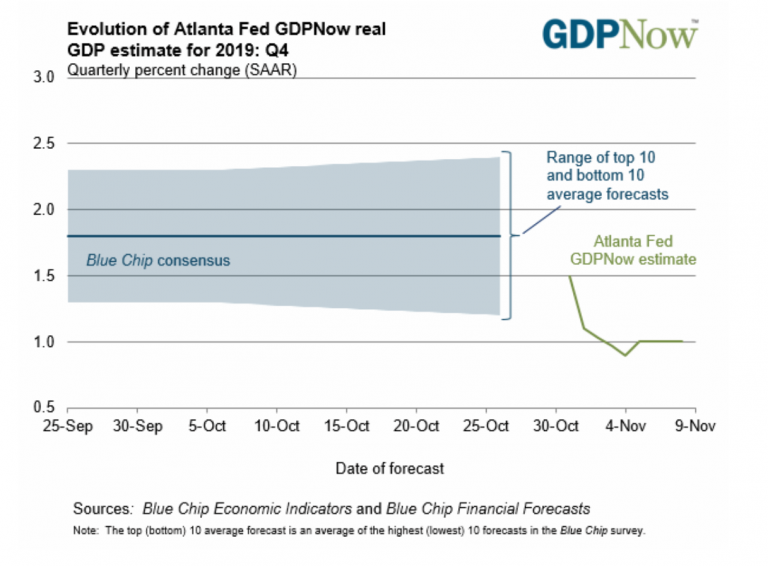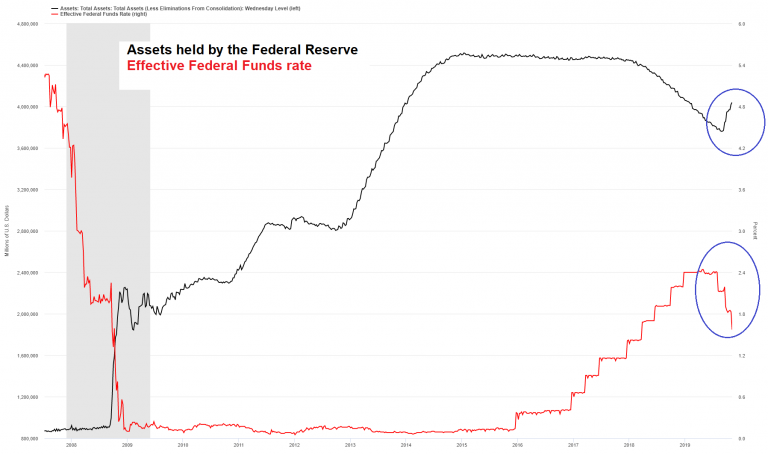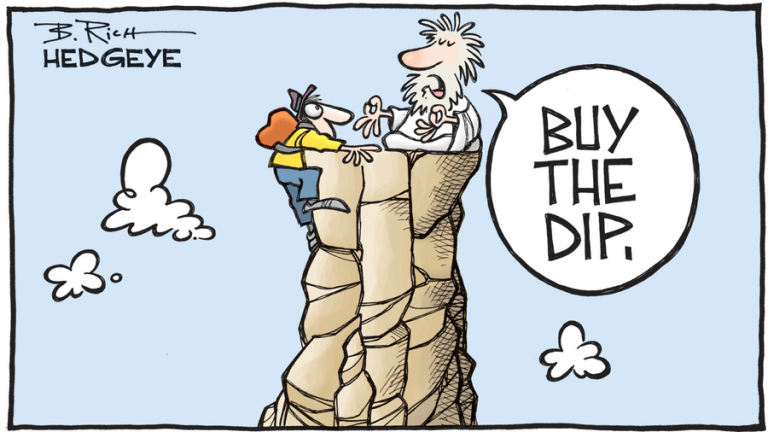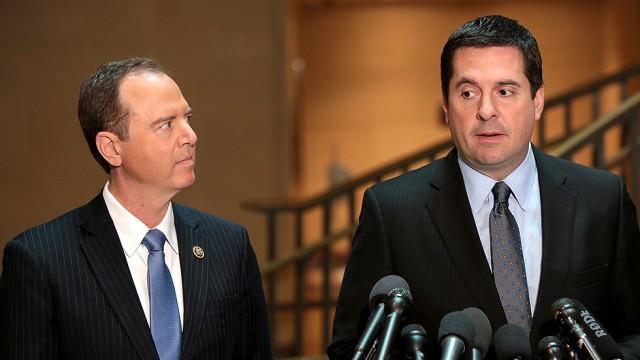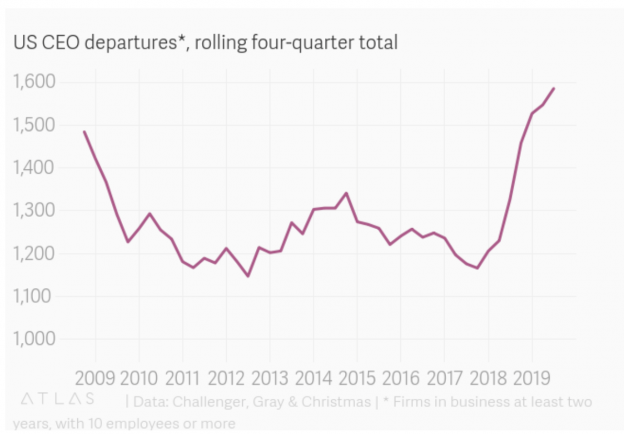Pork Hyperinflation Sends Chinese Consumer Prices Soaring Most In 7 Years
The bizarre disconnect at the heart of China’s market pricing engine is getting bigger with every passing month.
Whereas in the 2009-2015 period, China’s consumer and producer (or wholesale) prices tended to track each other largely tick for tick, sometime in the beginning of 2016, roughly when global leaders decided at the Shanghai Accord to reflate the global economy by unleashing a massive Chinese credit impulse…
… China’s PPI soared higher, which in turn allowed China to rapidly export inflation across the globe, prompting central banks to confuse China’s latest credit reflation blast with a coordinated global recovery and tighten financial conditions, something which at the end of 2018 they promptly realized was a mistake after global markets tumbled, resulting in the latest global wave of coordinated central bank easing.
Well, fast forward to today when overnight China reported that with the tailwind of its latest credit boost long gone, those all important – for Chinese corporate profits and global reflation – producer prices (PPI) fell by 1.6% in October, more than the 1.5% estimate, and above September’s 1.2% decline, and the lowest number since mid-2016. Inflation in the petroleum industry slowed the most, followed by coal mining.
“Persistent deflation in the industrial sector squeezes profitability – reducing leeway for investment and hiring,” said Bloomberg economist David Qu, confirming that China’s economy is poised for a sub-6% GDP print in the coming months.
Meanwhile, in a continuation of China “facing the worst of both worlds” which we first discussed in August, China’s consumer prices (CPI) inflation picked up further to 3.8% year-on-year in October, rising to a seven year high (the most since January 2012) and breaching the official target/ceiling (3%) for the first time since November 2013. In month-on-month terms, headline CPI inflation accelerated to a stunning +9.2% SAAR in October from +5.1% in September.
The bizarre divergence between soaring CPI and tumbling PPI which first emerged two years ago, was largely predicated by the ongoing surge in food inflation, which accelerated to a jarring +15.5% Y/Y in October from +11.2% Y/Y in September, the biggest annual increase since just before the financial crisis …
… primarily on what is now rampant pork hyperinflation due to China’s neverending fight with African swine fever (i.e, “pig ebola”), as pork inflation is up a stunning 101.3% Y/Y in October from 69.3% Y/Y in September, pushing up headline CPI inflation by around 0.8pp relative to September. Meanwhile, real, unadjusted pork prices have risen even higher, as wholesale pork prices have soared by a stunning 173% YTD!
To be sure, most of the month’s inflation surge was purely due to pork prices: Non-food CPI inflation edged down to +0.9% Y/Y in October, while fuel costs dropped by -15.1% in October, down further from the -12.1% drop in September. As a result, core inflation (headline CPI excluding food and energy) was flat at 1.5% yoy in October, with an annualized sequential increase of 1.8%.
Of course, as the African Spring of 2011 showed, soaring food prices are all that’s needed for a massive popular uprising, and whereas China’s NBS is merrily adjusting its various other price inputs, the fact that China’s pork prices are now openly hyperinflating making the country’s favorite food increasingly more unaffordable, the risk is that the local population snaps and finally revolts against a government that is failing in its most basic function: keeping 1.5 billion Chinese well-fed.
Making matters worse, China’s runaway food prices have a long way to go: as Goldman notes, “headline CPI inflation is likely to rise further in the coming months.”
High frequency data suggest year-on-year inflation in pork prices has continued to accelerate notably in early November. Prices in fresh vegetables have also started to pick up in early November in year-on-year terms, although inflation in fresh fruits has moderated further. Elevated inflation could be one factor that may limit the room for front-end rates to decline in coming months. And inflation expectation would also be important to watch, as PBOC officials suggested recently, to assess the impact of inflation on rates policy (whether to raise repo rates). According to the PBOC survey, the inflation expectation index (a diffusion index) ticked up in Q3, but was still relatively modest.
Further commenting on the latest numbers, Macquarie Securities economist Larry Hu said that “the surging CPI inflation is due to supply (mostly pork price) and the worsening PPI deflation is due to demand,” adding that “ideally monetary policy should respond to demand instead of supply. In reality, the PBOC is likely to strike a balance between PPI and pork price.”
Which brings us to the biggest issue facing the PBOC: how to trigger an economic boost without sending near record food prices even higher. To be sure, last week the PBOC modestly cut one of the central bank’s main lending rates (the MLF) by a tiny 5bps…
… analysts are concerned that the PBOC will likely refrain from aggressive intervention in the market until food inflation is under control, amid fears of growing social discontent over pork hyperinflation. As Bloomberg also notes, “while further monetary stimulus would help companies struggling with weakening demand, deflation and higher tariffs, even faster inflation would hurt households more.”
Which is why Beijing’s hands remain tied from injecting another debt bomb into the economy in hopes of sending yet another global reflationary burst.
And while the biggest domestic risk to China is getting soaring pork inflation under control, the biggest threat to the rest of of the world is the continued deflation in PPI. As Bloomberg separately writes, “in a fresh challenge to the ability of global central banks to revive inflation, China’s slowest growth in almost three decades and cheaper energy costs have left manufacturing prices declining since July. While cheaper goods may be a boon to foreign consumers as Christmas nears, the overall effect is a potential spiral of falling prices worldwide as companies everywhere are forced to compete with Chinese rivals to protect profits. That would add further tension to the U.S.-China trade war.“
“Inflation is increasingly driven by global factors, and in particular, by waves of disinflation emanating from China,” said Stephen Jen at Eurizon SLJ Capital. “This is related to China exporting its overhang of capacity” which has been exposed by weak domestic demand, trade tensions with the U.S., and lack of economic stimulus.
They expect the recent worsening of the producer price index to weigh on inflation rates in the U.S. and Europe, similar to what happened in 2014-16. Producer prices in Germany, Japan, South Korea and the U.S. are already negative.
Translation: China is about to begin dumping its excess goods in the global market in earnest, leading to a new round of trade anger, as global markets are flooded with Chinese products, crippling local producers, crushing purchasing power and wages, and resulting in fury at China’s trade practices.
We only bring this up because in an amusing twist recently, global capital markets have convinced themselves that the US-China trade war is somehow about to find a happy ending. Spoiler alert: it won’t.
Tyler Durden
Sat, 11/09/2019 – 12:00
via ZeroHedge News https://ift.tt/32yjaBs Tyler Durden
